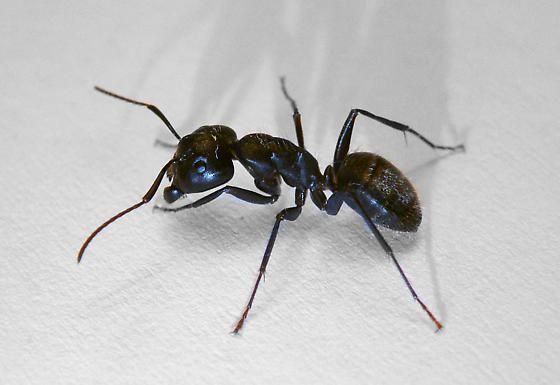Carpenter ants are a common household pest that can cause significant structural damage to your home. These industrious insects don’t actually eat wood, but rather excavate tunnels and galleries within it, weakening the structure over time. This blog post will provide a comprehensive guide on how to effectively get rid of carpenter ants and prevent future infestations.
Understanding Carpenter Ants
- Identification: Carpenter ants are large, typically black or dark brown, and range in size from ½ to ¾ inch long. They have two distinct nodes between their thorax and abdomen.
- Behavior: These ants are social insects that live in colonies, often numbering in the thousands. They prefer damp, decaying wood, but can also infest sound wood if moisture is present.
- Damage: Carpenter ants create galleries within wood, leaving behind smooth, sawdust-like shavings called “frass.” Their tunnels can weaken structural supports, leading to potential safety hazards like sagging floors or even structural collapse in severe cases.
Signs of a Carpenter Ant Infestation
- Presence of ants: Seeing large black ants indoors, especially in spring and summer, is a strong indicator of an infestation.
- Sawdust-like frass: Finding small piles of sawdust near potential entry points (windows, doors, cracks) is a key sign.
- Hollow-sounding wood: Tapping on suspected areas may produce a hollow sound if the wood is damaged.
- Discarded wings: Finding discarded wings near entry points can indicate a swarm and the presence of a mature colony.
- Unusual noises: You may hear rustling or tapping sounds coming from within the walls, especially at night.
- Frass in window wells or around foundations: This is a common entry point for carpenter ants.

Prevention Strategies
- Moisture Control:
- Fix leaks promptly: Address any leaks in roofs, gutters, and pipes.
- Improve drainage: Ensure proper drainage around the foundation to prevent water accumulation.
- Use dehumidifiers: Employ dehumidifiers in damp areas like basements and crawl spaces.
- Proper ventilation: Ensure adequate ventilation in attics and crawl spaces.
- Wood Inspection:
- Regular inspections: Conduct regular inspections of wood for signs of damage, especially around windows, doors, and foundations.
- Replace damaged wood: Replace any damaged wood promptly to prevent further infestation.
- Firewood storage: Store firewood away from the house to prevent ants from accessing it.
- Tree and Shrub Maintenance:
- Trim branches: Trim branches that touch the house to prevent easy access for ants.
- Remove deadwood: Remove any dead or decaying wood from trees and shrubs near the house.
- Sealing Entry Points:
- Seal cracks and crevices: Seal cracks and crevices around windows, doors, and foundations with caulk or sealant.
- Weatherstripping: Use weatherstripping to seal gaps around doors and windows.
- Install screens: Install screens on windows and doors to prevent ant entry.
DIY Control Methods
- Boric Acid: Boric acid is a natural pesticide that can be effective in controlling carpenter ant infestations. It can be used as a powder or mixed with a sweet bait.
- Caution: Boric acid is toxic if ingested. Keep it out of reach of children and pets.
- Diatomaceous Earth: Diatomaceous earth is a natural, non-toxic powder that dehydrates and kills insects. It can be dusted in areas where ants are seen.
- Baits: Commercial ant baits containing boric acid or other insecticides can be effective. Place baits near ant trails and entry points.
- Note: Baits may take several weeks to show results.
Professional Pest Control
- Inspection: A professional pest control services can conduct a thorough inspection to locate the source of the infestation and assess the extent of damage.
- Treatment Options:
- Liquid insecticides: Applied to areas where ants are active and around potential entry points.
- Dust insecticides: Used in wall voids and other hard-to-reach areas.
- Baiting systems: Placed strategically to eliminate the entire colony.
- Localized treatments: Depending on the severity of the infestation, localized treatments may be necessary, such as drilling into infested wood and injecting insecticide.
- Follow-up Inspections: Regular follow-up inspections are crucial to ensure the infestation is completely eradicated.
Important Considerations
- Safety First: When using any pesticides, always wear appropriate safety gear, such as gloves and eye protection.
- Read and Follow Instructions: Carefully read and follow the instructions on all pesticide labels.
- Consider the Environment: Choose environmentally friendly options whenever possible.
- Preventative Measures: Regular inspections and preventative measures are key to long-term control and preventing future infestations.
Conclusion
How to get rid of Carpenter ant can be a significant problem, but with a proactive approach and a combination of prevention strategies and effective control methods, you can effectively eliminate them and protect your home from further damage. By combining DIY methods with professional assistance when necessary, you can regain control and enjoy a pest-free environment.




